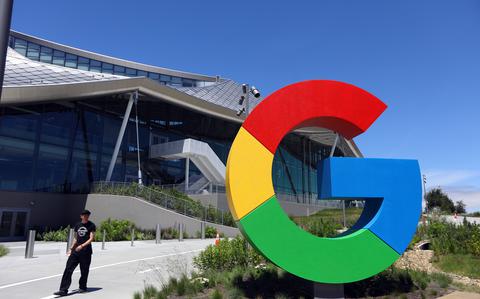The Google Antitrust Trial: A Deep Dive into the Allegations Against the Tech Giant
On May 16, 2022, the exterior of Google’s new Bay View campus in Mountain View, California, stood as a testament to the company’s growth and innovation. However, beneath this façade of progress, a storm was brewing in the form of a federal antitrust trial that could reshape the landscape of online advertising. The U.S. Justice Department has accused Google of monopolizing the technology used for buying and selling online display ads, raising serious questions about the fairness and competitiveness of its practices.
The Allegations: A Complex Ad Ecosystem
At the heart of the Justice Department’s case is the assertion that Google has systematically restricted or eliminated choices for both website publishers and advertisers. This alleged manipulation of its ad ecosystem is said to benefit Google at the expense of its competitors. Over the course of the trial, antitrust enforcers have sought to illustrate how Google’s intricate ad ecosystem operates and how the company allegedly exploits its market power in three key areas: sell-side tools (ad servers), advertising exchanges, and buy-side tools (ad networks).
Dominance in Ad Servers
Website publishers utilize ad servers to manage their available ad space, tracking minimum bids and sales. The Justice Department estimates that Google’s ad server controls a staggering 87% of the U.S. market and 91% globally. This dominance raises concerns about the lack of competition and the potential for abuse of power.
The Role of Advertising Exchanges
Advertising exchanges serve as the auction houses that connect website publishers with advertisers. Google operates the largest exchange, known as AdX (now rebranded as Google Ad Manager), which is estimated to control 47% of the U.S. market and 56% globally. Other notable exchanges include Pubmatic Inc., Index Exchange, and Magnite Inc. The concentration of power within Google’s exchange raises questions about the fairness of the bidding process.
Buy-Side Tools and Ad Networks
Advertisers leverage demand-side platforms to manage their ad placements and bidding strategies. Google’s own demand-side platform allows it to bid on its exchange, further consolidating its control over the ad ecosystem. The Justice Department alleges that Google Ads, its ad network, commands 88% of the U.S. market and 87% globally, reinforcing its monopolistic position.
The Tactics: Manipulating Access and Auctions
Antitrust enforcers have accused Google of providing preferential access to its own ad products, effectively coercing both advertisers and publishers to rely solely on its services. This practice raises significant ethical concerns about the integrity of the advertising marketplace.
Tying Products Together
One of the most contentious issues is Google’s practice of tying its products together. Advertisers using Google Ads are often required to place bids through AdX, limiting their options and forcing them to rely on Google’s ecosystem. This interconnectedness means that publishers who wish to access Google Ads must also use Google’s ad server, creating a cycle of dependency that stifles competition.
The "First Look" Advantage
Before 2015, online display ads were sold using a "waterfall" method, where ad servers sequentially called on exchanges for bids. Google’s ad server, which was widely used, would automatically prioritize AdX, giving it a significant advantage. This "first look" access allowed Google to win the majority of bids, effectively sidelining competitors.
The "Last Look" Strategy
In addition to first look, Google allegedly employed a "last look" strategy, where it could see the highest bids from other exchanges before submitting its own. This advantage allowed Google to adjust its bids and win ads without having to compete directly, further consolidating its market power.
The Response: Google’s Defense
In response to the allegations, Google has argued that the Justice Department misunderstands the dynamics of the online advertising market. The company asserts that advertisers have multiple options, including platforms like Amazon and Meta (formerly Facebook). Google contends that its product integrations are designed to enhance user experience and combat issues like spam and ad fraud.
Innovation vs. Competition
Google maintains that its technological advancements and product integrations are not anti-competitive but rather a reflection of innovation within the industry. The company argues that its practices ultimately benefit advertisers and publishers by providing better control and efficiency in ad placements.
The Impact of Acquisitions
The trial has also shed light on Google’s acquisition strategies, particularly its purchase of AdMeld in 2011. This acquisition is viewed by some as a "killer acquisition," aimed at stifling competition by absorbing a potential rival and subsequently shutting down its services. The implications of such acquisitions raise questions about the long-term health of competition in the advertising technology space.
Conclusion: A Pivotal Moment for Online Advertising
As the trial unfolds, the implications of the Justice Department’s case against Google could have far-reaching consequences for the online advertising industry. The outcome may not only redefine Google’s role in the market but also set a precedent for how tech giants operate in an increasingly digital economy. The balance between innovation and competition remains a critical issue, and the resolution of this case will likely shape the future of online advertising for years to come.
In a world where digital advertising is a cornerstone of business strategy, the stakes are high, and the eyes of the industry are firmly fixed on the courtroom. As the trial progresses, the question remains: will the scales of competition be tipped in favor of fairness, or will the dominance of tech giants like Google continue unchecked?


